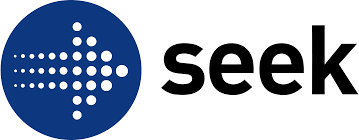Back in March, we discussed different types of user research and focused in on diary studies. In May, we’re talking about how work with those insights to build products and some of the challenges you may face.
We have 2 amazing speakers on Thursday May 25th with first hand experience.Through a case study and reflection, they’ll show what it’s like to run user research and let the results drive the product & features.
Using Experience Sampling for Rapid Insights into User Needs
In this case study, George Cockerill will share how using the Experience Sampling method gave rich insights into user needs for the feature ideation of a brand new mobile app at Deakin University.
As part of the research activities to inform the development of a smart assistant app for students, Experience Sampling quickly gave the product team useful and relevant data to help understand student needs, behaviours and pain-points in multiple contexts over time.
George will talk share his experience of planning, executing and analysing the results from an experience sampling study. With practical advice on how to run the study, tools and techniques, the key points you need to know and things to watch out for.
Why is Marathon Running Important when Introducing User Research?
During the last decade, user research has been a key component of the product development process. Within the games industry there has been a significant effort that focuses on introducing and integrating user research as part of a ‘player first’ culture. Numerous challenges exist when doing so -especially when working with teams who have not been exposed to user research previously.
Kostas Kazakos will reflect on these challenges via his personal journey as a marathon runner and guided by Donald Schon’s reflective practitioner’s approach
He will also introduce DECEMA – a frame of reference whose aim is to help UX practitioners when introducing user research to development teams and organizations.
Our Speakers
George Cockerill is a Senior UX Designer at Deakin University, a Lead UX Instructor at General Assembly, an organiser of the UX Melbourne Book Club and can be found on Twitter at @GeorgeCockerill.
Kostas Kazakos is a User Experience Researcher with a qualitative mind and a quantitative heart. He currently manages the user/player research at Firemonkeys (an Electronic Arts studio located in Melbourne). For the last 10 years, Kostas has been handling primitive research problems in the mobile space and turning them into actionable design insights by employing a palette of qualitative and quantitative methods. He is an advocate of experience-centred design and passionate about answering the ‘why’ behind the ‘what’.
Our Hosts
We’d like to thank Seek for being our hosts this month!


